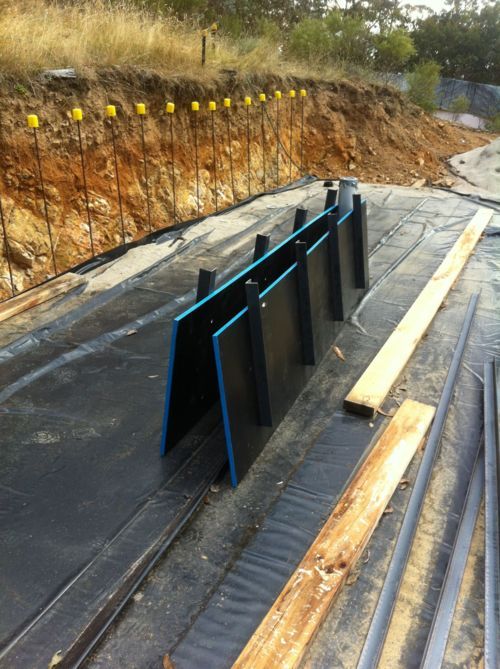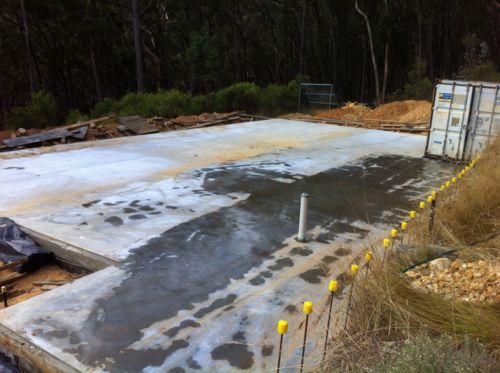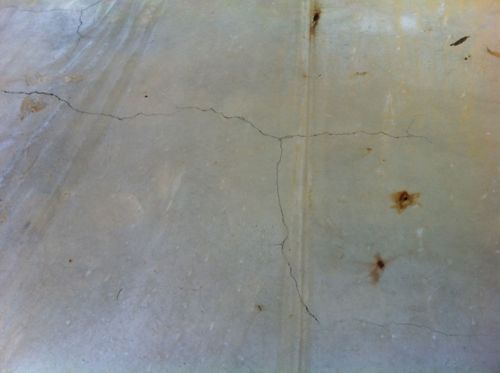Back into it early again today. First thing on the agenda was to strip the forms from around the slab, and see what sort of a job I did with the vibrator. (This is a modified whipper snipper with a … big vibrator on the end, which is used to liquefy the concrete and flow it into tight spaces). Turns out it worked pretty well, all the edges are solid and well defined, with a perfect rebate on which to install the Hebel panels later. Good stuff.
Stripping the forms and removing them turned out to be more work than I anticipated, and took nearly all day. There are still a few bits of form ply in there which seem determined to stay where they are, and frankly I’m inclined to relent and allow them. The alternative involves digging, and I’m just not sure I can bring myself to do more of that just yet.
I did manage to spend a couple of hours building new forms too, for the rammed earth. This is the first set, which was really just practice in building the forms and allows us to build a test wall somewhere to test the composition of our soil and its suitability. I’m yet to hear back from the engineer, so this may be entirely premature if we can’t build this first structural wall in earth, but hey.. I’m an optimist :)
This is what I wound up with after much cutting and grinding:

I still need to make up the threaded rods which will compress the forms together, that’s a job for tomorrow.
The last thing on the agenda today was to get the plastic off the slab, and see what we’ve got. I think I should have been wearing gloves when I rolled the plastic up - the liquid underneath it was all soapy and slippery, and my hands pruned up very quickly and felt really, really weird. I suspect it was a plasticiser additive in the concrete.. here’s hoping it’s not hazardous :o
Anyway, there’s a slab under there!

It’s looking pretty good! There is a very slight low spot just above the pipe in that photo, but overall I’m very happy. It doesn’t look like the VicRoads-induced delay did any permanent damage either, which is a relief.
There are quite a few surface cracks visible, but that’s to be expected. These are really only visible when the surface has been wet - I can’t feel them at all.

They really do look worse than they are - they’d be invisible dry, and can’t be felt at all.
No comments:
Post a Comment